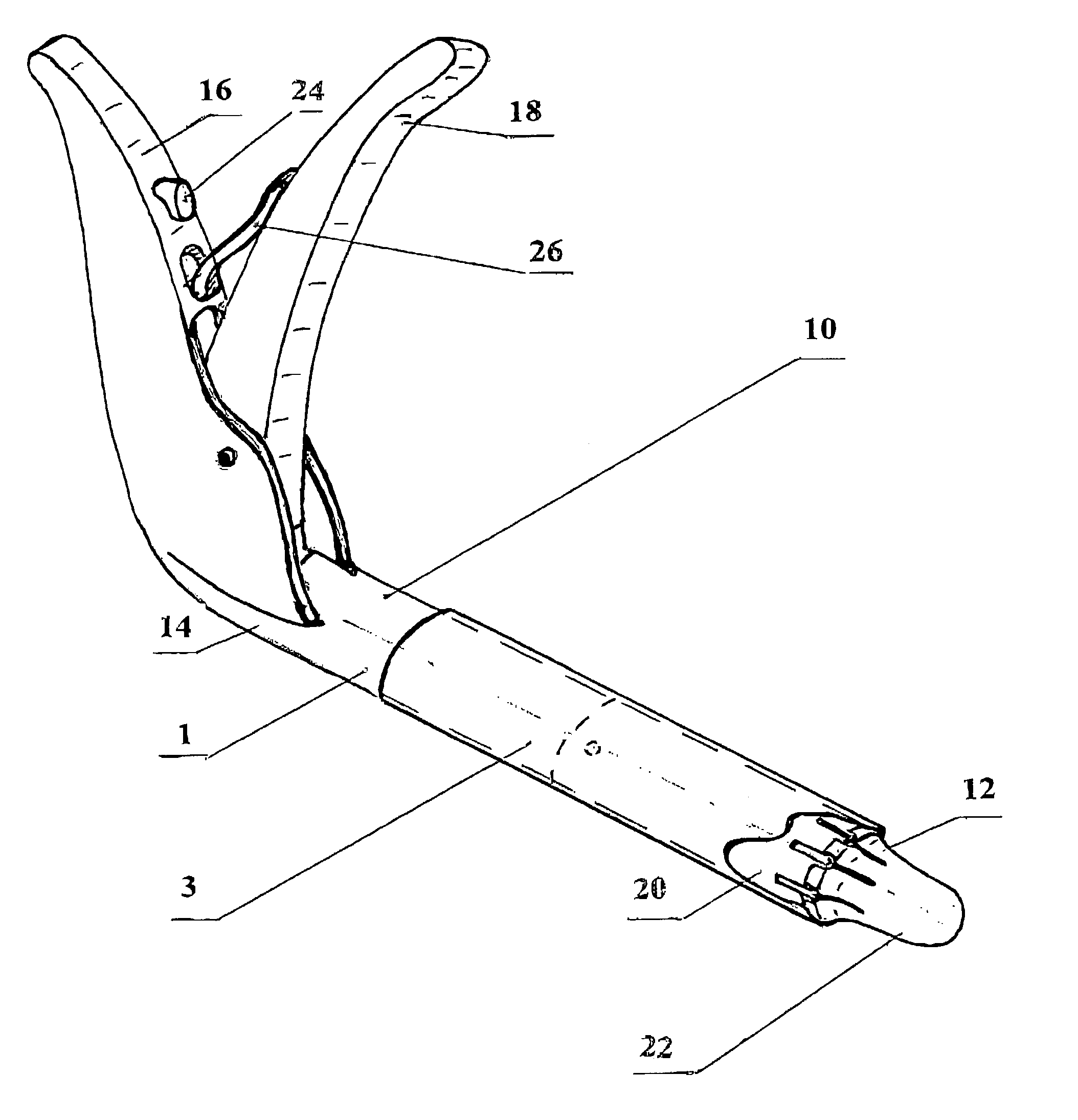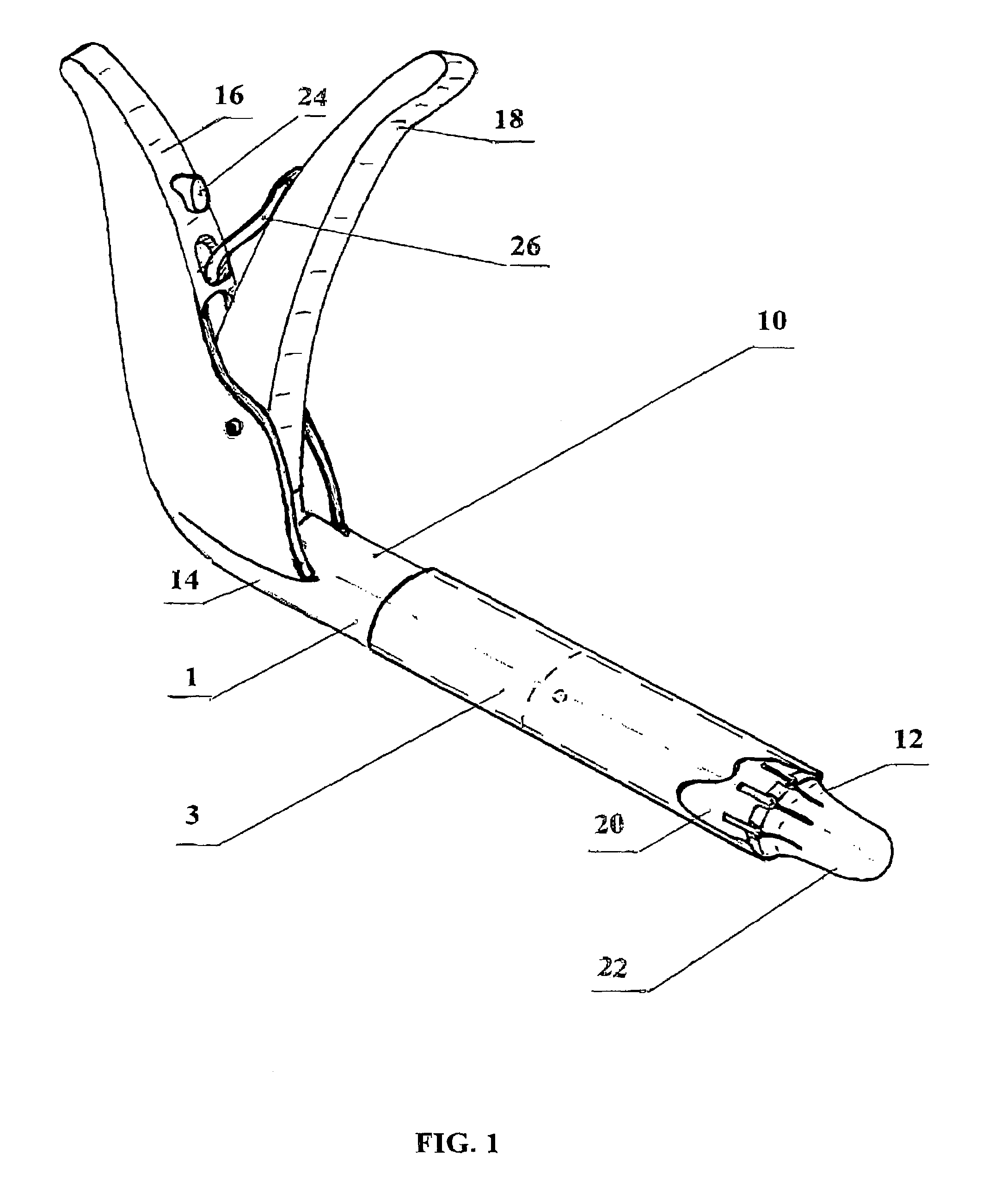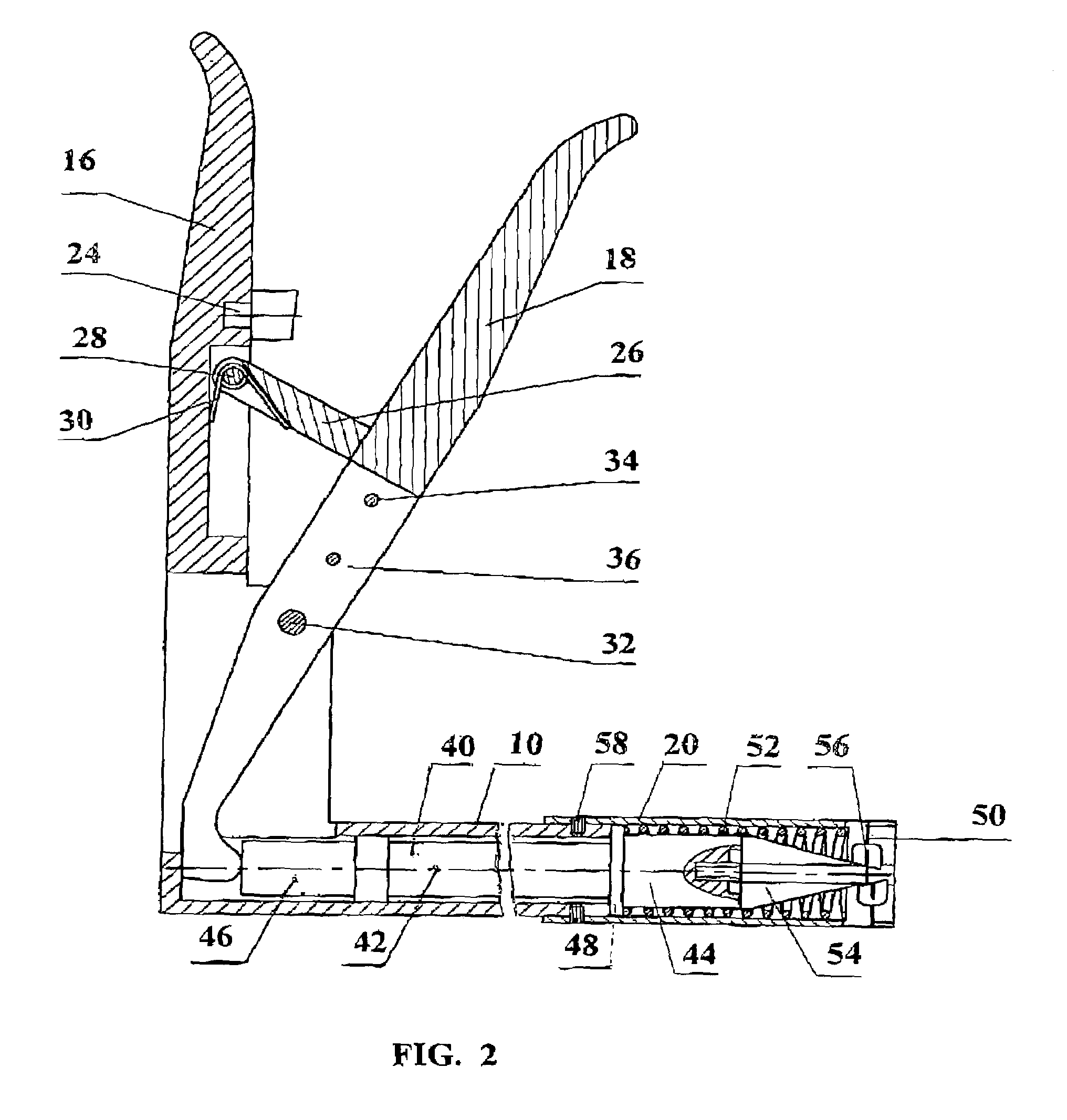Method and apparatus for intraluminal fixation of intravascular devices
a technology for intravascular devices and fixation methods, applied in the field of medical techniques, can solve the problems of limited functional possibilities, complicated and insufficiently reliable design, and inoperable apparatus design suggested by tahery
- Summary
- Abstract
- Description
- Claims
- Application Information
AI Technical Summary
Benefits of technology
Problems solved by technology
Method used
Image
Examples
Embodiment Construction
[0082]The preferred embodiments of the present invention are described below. The inventors of the present subject matter contemplate that the embodiments described herein are capable of use in the repair of other vessels and in other procedures. Thus, it is intended that the present invention cover the modifications and variations of the invention, provided they come within the scope of the appended claims and their equivalents.
[0083]The most preferred embodiments of a stapler, according to the present invention, are shown in drawing FIGS. 1 and 2–28.
[0084]The present invention (FIG. 1) includes a stapler 1 for intraluminal fixation of intravascular devices, substantially grafts 3, located inside blood vessels, using minimally invasive surgery techniques.
[0085]Stapler 1 comprises a hollow body 10, substantially cylindrical in shape (FIG. 1), having a proximal end 12 and a distal end 14 with a holding handle 16 extending therefrom at a certain angle, not exceeding 90 degrees, and a ...
PUM
 Login to View More
Login to View More Abstract
Description
Claims
Application Information
 Login to View More
Login to View More - R&D
- Intellectual Property
- Life Sciences
- Materials
- Tech Scout
- Unparalleled Data Quality
- Higher Quality Content
- 60% Fewer Hallucinations
Browse by: Latest US Patents, China's latest patents, Technical Efficacy Thesaurus, Application Domain, Technology Topic, Popular Technical Reports.
© 2025 PatSnap. All rights reserved.Legal|Privacy policy|Modern Slavery Act Transparency Statement|Sitemap|About US| Contact US: help@patsnap.com



